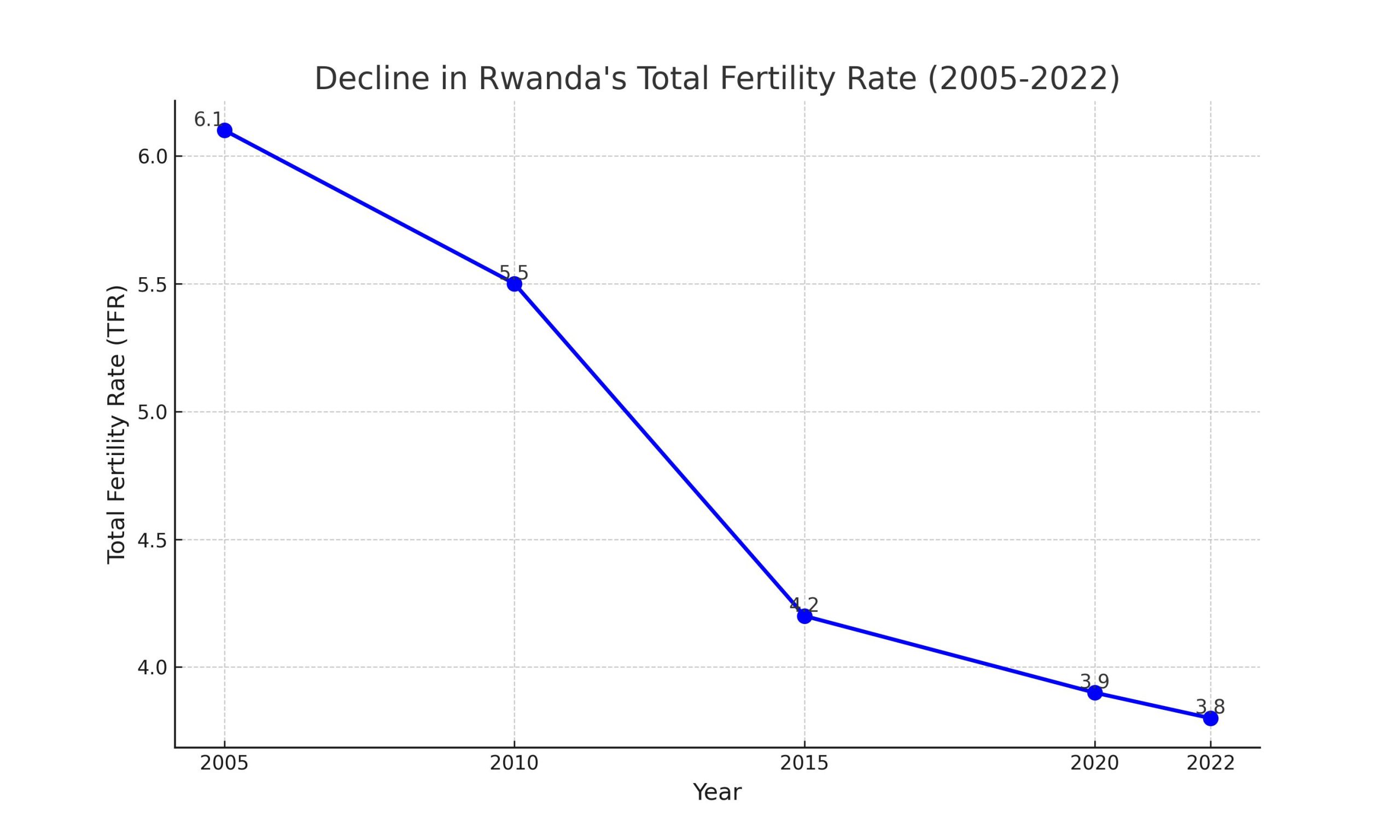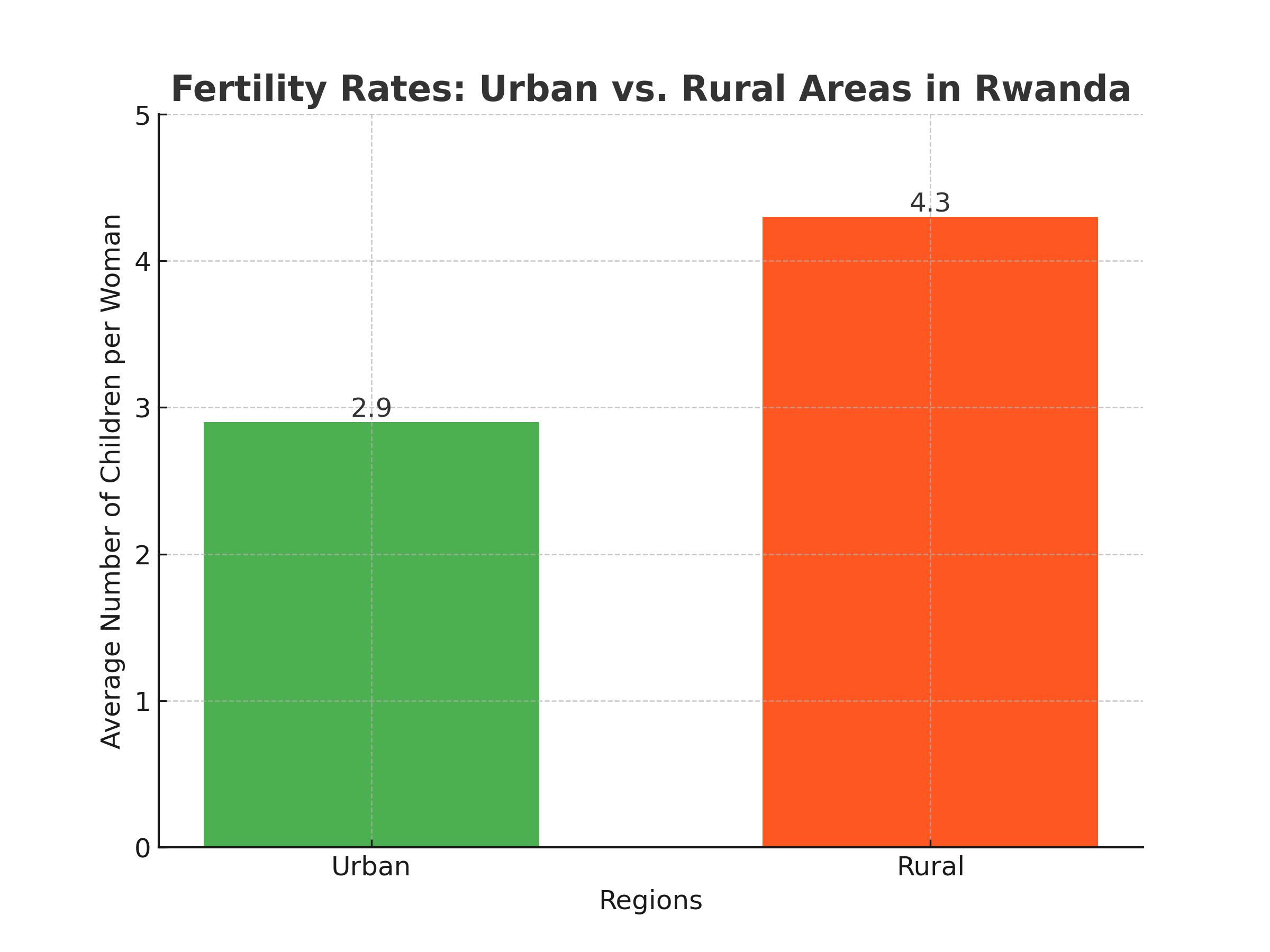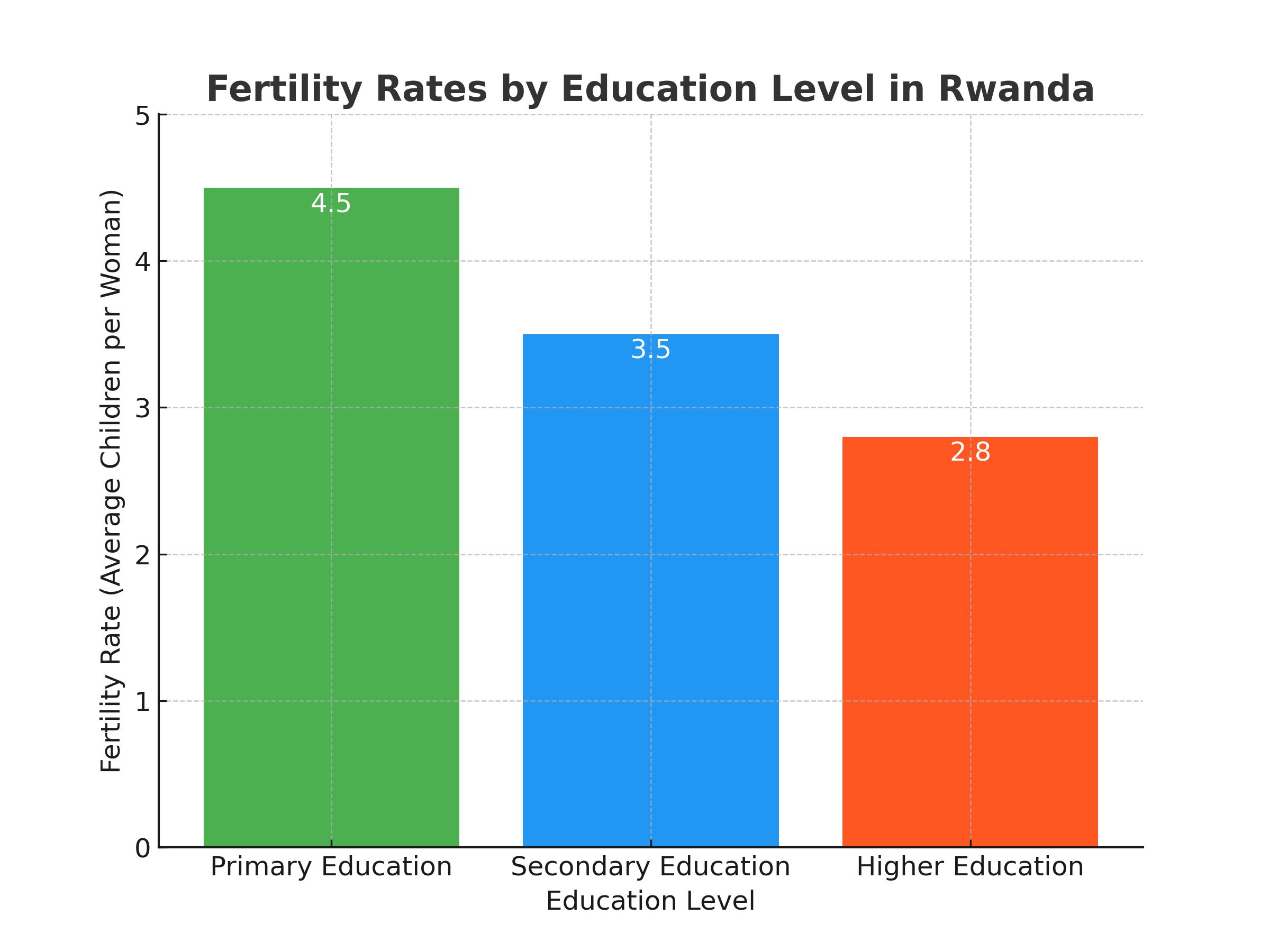The number of children per mother in Rwanda has been steadily declining, reflecting significant changes in societal norms, access to education, and healthcare services. According to data from the National Institute of Statistics of Rwanda (NISR), the Total Fertility Rate (TFR) dropped from 6.1 children per woman in 2005 to 3.8 children in 2022.
This decline is a result of concerted efforts in family planning and women’s empowerment, reshaping family dynamics across the country.
From Six to Four: The Journey of Fertility Decline

In 2005, the average Rwandan woman had over six children, a figure driven by limited access to family planning and traditional expectations of large families. Fast forward to 2022, the average has nearly halved. NISR attributes this decline to a robust national family planning program, which has increased contraceptive use from 10% in 2005 to 64% in 2020.
Voices of Change: Testimonies from Women
Jeannette Mukamana, a mother of three from Bugesera District, credits family planning education for her decision to have fewer children.
“My mother had seven children, but I realized that having a smaller family allows me to invest more in each child’s education and well-being. Access to family planning changed my life.”
Her story echoes the experiences of many Rwandan women who now view smaller families as a pathway to improved quality of life.
Education and Fertility: The Critical Link
Education plays a pivotal role in fertility rates. NISR data shows that women with secondary or higher education have an average of 2.8 children, compared to 4.5 for those with only primary education. This correlation highlights the impact of education on family planning choices and economic opportunities for women.
This graphic compares fertility rates based on education levels
Economic Implications of Smaller Families
Smaller family sizes are contributing to Rwanda’s economic development. With fewer dependents, families can allocate more resources to education, healthcare, and investments. Economists predict that this demographic shift will enhance Rwanda’s potential to harness a “demographic dividend” where a higher proportion of the population is in the workforce.
Urban vs. Rural Dynamics
The decline in births per mother is more pronounced in urban areas, where the TFR is 2.9 compared to 4.3 in rural regions. This disparity is influenced by differences in access to healthcare, economic opportunities, and cultural norms.
However, rural communities are catching up thanks to outreach programs that bring reproductive health services closer to underserved populations.
This graphic shows a side by side comparison of fertility rates in urban and rural areas
Teenage pregnancies: A slight decline amid ongoing challenge
The statistic that teenage pregnancies account for 5.2% of births in Rwanda in 2020 is based on the findings of the Rwanda Demographic Health Survey (DHS). This survey tracks trends in various aspects of population health, including teenage pregnancies. According to the survey data, the prevalence of teenage pregnancies in Rwanda was 5.2% in 2020, reflecting a slight decline from 7.3% in 2015
Looking Ahead: Sustaining the Momentum
Rwanda’s commitment to gender equality, universal education, and accessible healthcare is central to sustaining the decline in fertility rates. Stakeholders emphasize the importance of integrating reproductive health education into schools and community initiatives.
Jeannette’s Reflection:
“With the right support, Rwandan women can lead the way in building a healthier and more prosperous future for our families and our nation.”
Rwanda’s journey toward smaller families is more than just a statistical trend; it represents a broader shift toward development, education, and women’s rights. The decline in births per mother is a positive sign of progress and empowerment, reflecting the country’s commitment to improving the well-being of its citizens and shaping a brighter, more sustainable future for all.
BY NIKUZE NKUSI Diane






